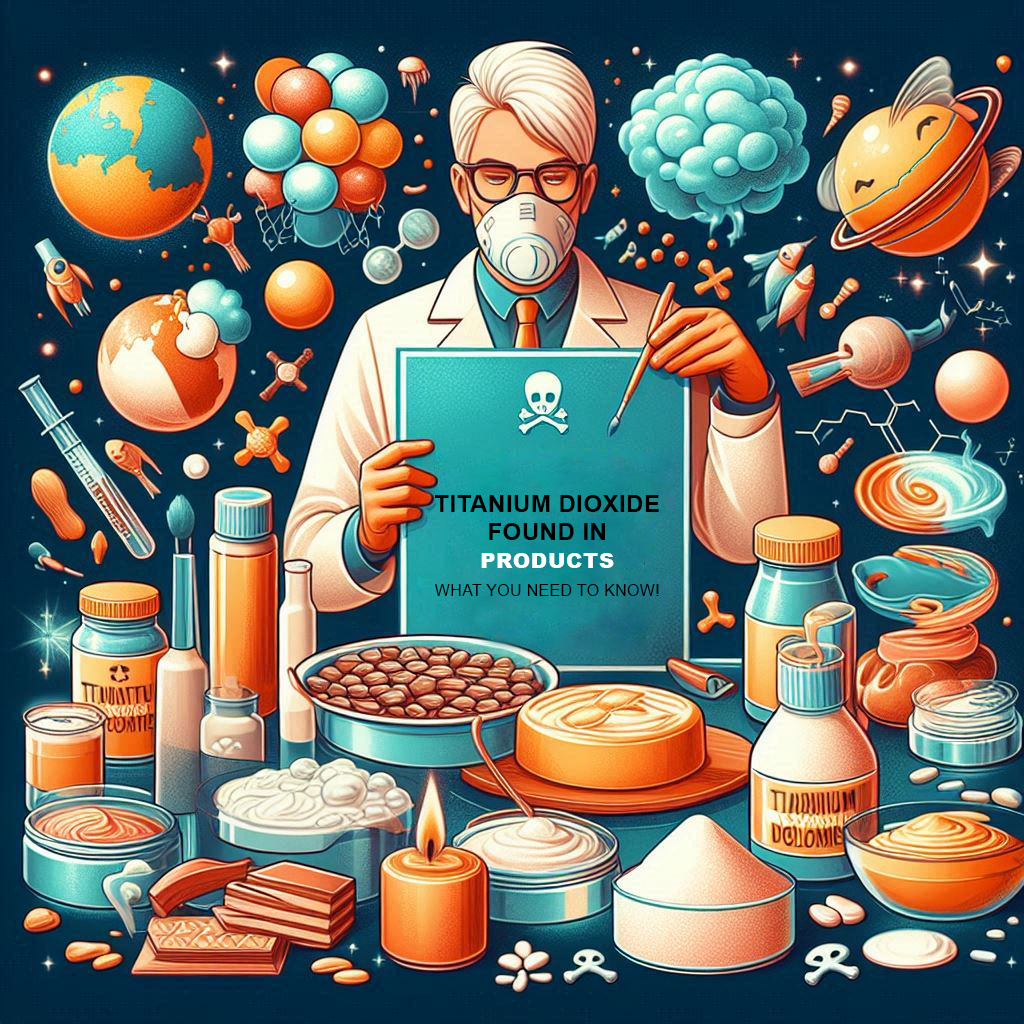Titanium Dioxide Found In: Welcome, dear readers! Have you ever wondered about the white pigment that makes your toothpaste gleam? It also gives that pristine look to your favorite snacks. Titanium dioxide is a ubiquitous compound found in many products we use daily. This deep dive explores where and why we use titanium dioxide, its benefits, and the discussions surrounding its safety. Get ready for some eye-opening insights into a substance as common as it is controversial.
What is Titanium Dioxide?
Titanium dioxide (TiO2) is a naturally occurring mineral derived primarily from ilmenite, rutile, and anatase. Known for its outstanding brightness and very high refractive index, titanium dioxide is one of the whitest substances on Earth. These unique properties make it an ideal pigment and opacifier, enhancing the color and opacity of products.
Applications in Daily Life
- Personal Care Products: From sunscreens to cosmetics, titanium dioxide is everywhere, providing whiteness and protection against ultraviolet light.
- Food Products: It is used as a colorant to make foods more appealing. You might find it listed as E171 on food labels.
- Pharmaceuticals: It is commonly found in the coatings of medications to make them white and opaque.
Titanium Dioxide Found In Consumer Goods
The use of titanium dioxide extends far beyond just making products white; it enhances their properties in several ways:
In Paints and Coatings
Titanium dioxide is crucial in the paint industry for its ability to provide opacity, which helps cover up previous colors or imperfections on painted surfaces.
In Plastics and Textiles
Adding titanium dioxide to plastics and textiles can improve their resistance to degradation by UV light, extending the life of these products.
Environmental Applications
Interestingly, we also use titanium dioxide in environmental applications, such as water purification and air purification systems, due to its photocatalytic properties.

Safety and Regulatory Aspects
As with many chemical compounds, the safety of titanium dioxide has been a topic of discussion among researchers and regulatory bodies.
Research on Health Impacts
- Ingestion: Studies have shown that while titanium dioxide is safe in limited quantities, there are concerns about its accumulation in the body when ingested in large amounts.
- Inhalation: There are specific concerns about inhaling titanium dioxide dust, which is a risk primarily for workers in factories that handle the powder form of the compound.
Regulations
Different countries have varying guidelines regarding the use of titanium dioxide, with some debating stricter regulations based on recent findings.
Ethical and Environmental Considerations
The extraction and processing of titanium dioxide raise environmental concerns. The mining of titanium ores can lead to habitat destruction, and the manufacturing process is energy-intensive.
Sustainable Practices
Efforts are being made to reduce the environmental footprint of titanium dioxide production. These include improving the efficiency of extraction processes and recycling waste materials.
Conclusion: A Balancing Act
Titanium dioxide is a remarkable compound with a wide range of applications that benefit various industries and consumer goods. While it brings significant functional benefits, it is crucial to balance these with considerations of health, safety, and environmental impact. When we know the ingredients in the products we use, we can make choices that align with our values and health preferences.
In exploring the world of titanium dioxide, we not only become more conscious consumers but also gain insight into how complex and interconnected our everyday products are. Whether you’re deciding which toothpaste to buy next or which paint to use for your renovation project, remember the small yet mighty role of titanium dioxide—the white wonder in your everyday life!
Feel free to share this blog post or comment below if you have thoughts or questions about the use of titanium dioxide in everyday products. Your feedback is invaluable!
Titanium Dioxide Comes From: The Colorful World Of White





